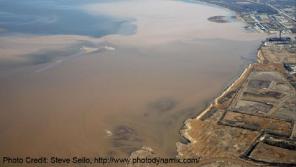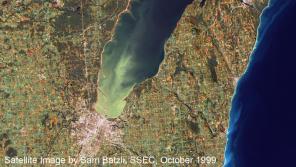pollution and runoff
Our culture is obsessed with productivity. How many times have you answered the question “How have you been?” with “Really busy, and you?” And so, we invent tools to help us get things done.
What if there were a way to reduce toxic chemicals in our Great Lakes and inland waters, while reducing greenhouse gasses, and improving air quality? I think there is a way, and I’ve been working on it for a long time.
An international group of researchers recently published a paper in Science warning that humanity has crossed four of nine planetary boundaries—the biophysical parameters within
Benjamin Franklin said, “When the well is dry, we learn the worth of water.”
Welcome! This is the first of what will be many pieces on how different people relate to our shared waters.
Wisconsin writer Bill Berry manages to turn one of the state’s most historic—and perhaps longest—environmental battles into what sometimes feels like a fast-paced thriller.
As captain of the Bay Guardian, Tracy Valenta is out plying the waters of Green Bay at least twice a week. From her sturdy research vessel, Valenta studies Green Bay for NEW Water, the City of Green Bay’s municipal sewage district.
Apostle Islands National Lakeshore supeintendent Bob Krumenaker explains climate change projections for the Great Lakes and outlines adaptation strategies.
- 1 of 2
- next ›
Contact Us
contact@wisconsinacademy.org
Wisconsin Academy Offices
1922 University Avenue
Madison, Wisconsin 53726
Phone: 608.733.6633
James Watrous Gallery
3rd Floor, Overture Center for the Arts
201 State Street
Madison, WI 53703
Phone: 608.733.6633 x25









